Science news in brief: From googly eye birds to flat pasta turning 3D
... and other stories from around the world

Your support helps us to tell the story
From reproductive rights to climate change to Big Tech, The Independent is on the ground when the story is developing. Whether it's investigating the financials of Elon Musk's pro-Trump PAC or producing our latest documentary, 'The A Word', which shines a light on the American women fighting for reproductive rights, we know how important it is to parse out the facts from the messaging.
At such a critical moment in US history, we need reporters on the ground. Your donation allows us to keep sending journalists to speak to both sides of the story.
The Independent is trusted by Americans across the entire political spectrum. And unlike many other quality news outlets, we choose not to lock Americans out of our reporting and analysis with paywalls. We believe quality journalism should be available to everyone, paid for by those who can afford it.
Your support makes all the difference.The birds and the buoys: using googly eyes to avert extinction
Every day, thousands of hooks and nets meant for fish end up catching seabirds – a global problem that is pushing many seabird species to the brink of extinction. But perhaps no fishing gear does more damage than the gillnet, which entangles and kills at least 400,000 seabirds each year.
What if all it took to save them was a pair of googly eyes?
It’s not quite that simple, but a team of scientists, conservationists and engineers are developing a device that has the potential to save many seabirds from gillnets. This device, known as the looming-eyes buoy, is essentially a floating scarecrow.
A prototype was recently tested on long-tailed ducks in Kudema Bay in Estonia. The results of this study, published on 5 May in the journal Royal Society Open Science, suggest that looming-eyes buoys can reduce the number of seabirds by up to 30 per cent within a 165ft radius. Although the looming-eyes buoy won’t completely solve the problem, it’s a step in the right direction, experts say.
Preventing albatross, petrels, gannets, boobies and other seabirds from being caught in gillnets is not easy. The smell of a gillnet loaded with fish can attract seabirds from miles away. And when these birds dive into the water to get what they thought was a free meal, they can become entangled in the gillnet and drown.
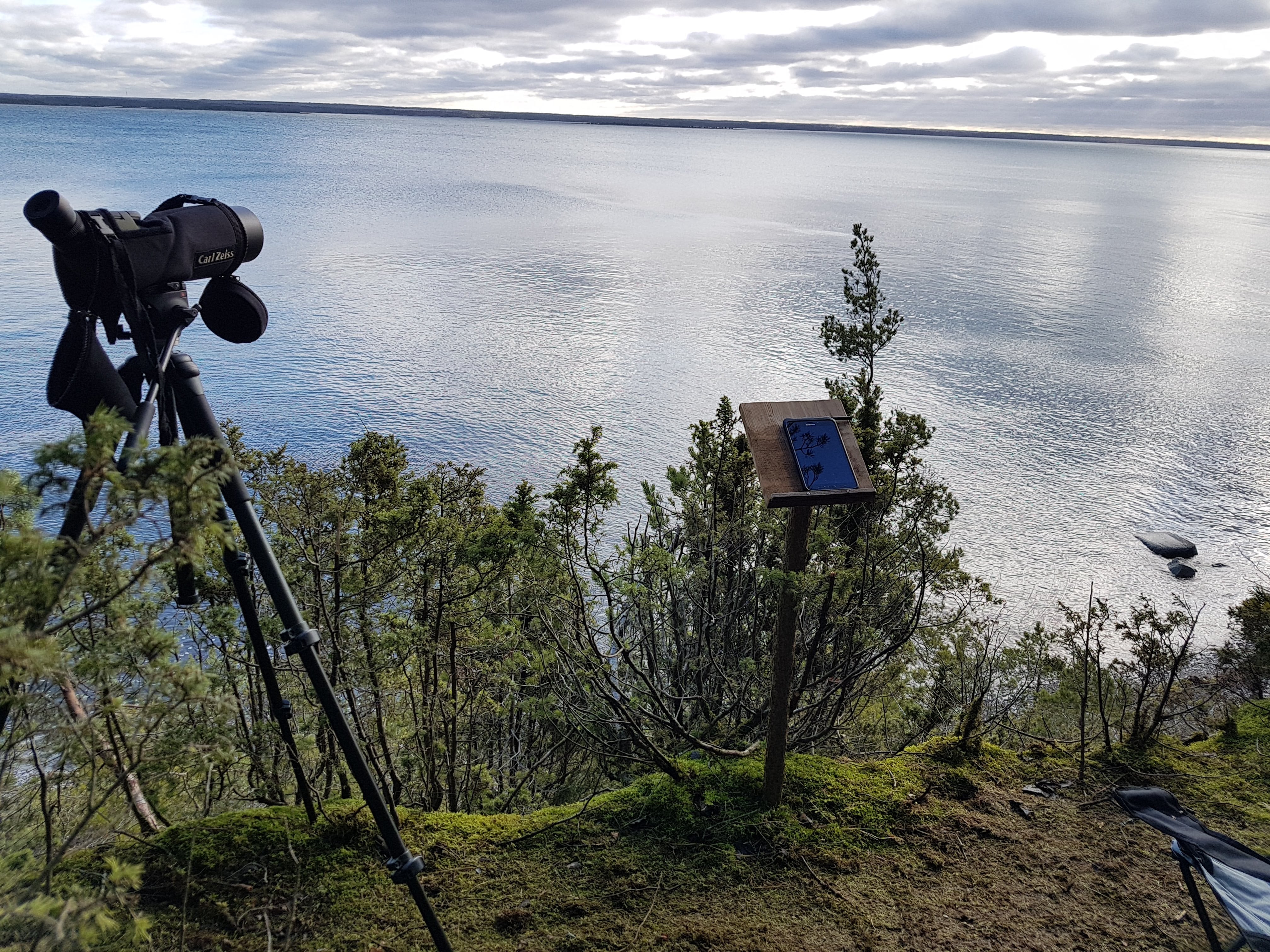
In 2018, conservationists from BirdLife International, a conservation organisation, began brainstorming ways to prevent such occurrences.
“We thought that if we could prevent vulnerable seabirds from diving too close to the gillnets in the first place, we might be able to finally tackle bycatch [the problem of birds or other sealife being caught by accident] significantly,” says Yann Rouxel, a project officer at BirdLife International and lead author of the new study. That’s when Rouxel and his team came up with the idea for a marine scarecrow.
He and his colleagues shared their idea with scientists from the Estonian Ornithological Society and engineers from Fishtek Marine, a company that makes fishing equipment, and just over a year later the looming-eyes buoy was born.
Much like the scarecrows that line cornfields or the plastic owls that sit atop office buildings, the looming-eyes buoy deters birds through intimidation. The large, rotating eye spots that sit atop the bobbing buoy are designed to resemble the staring eyes of a large predator.
“If we put ourselves in the place of the diving birds, it is not surprising that large staring eyes at the surface of the water may dissuade them from coming near,” says Brendan Godley, a professor of conservation science at the University of Exeter in England. Annie Roth
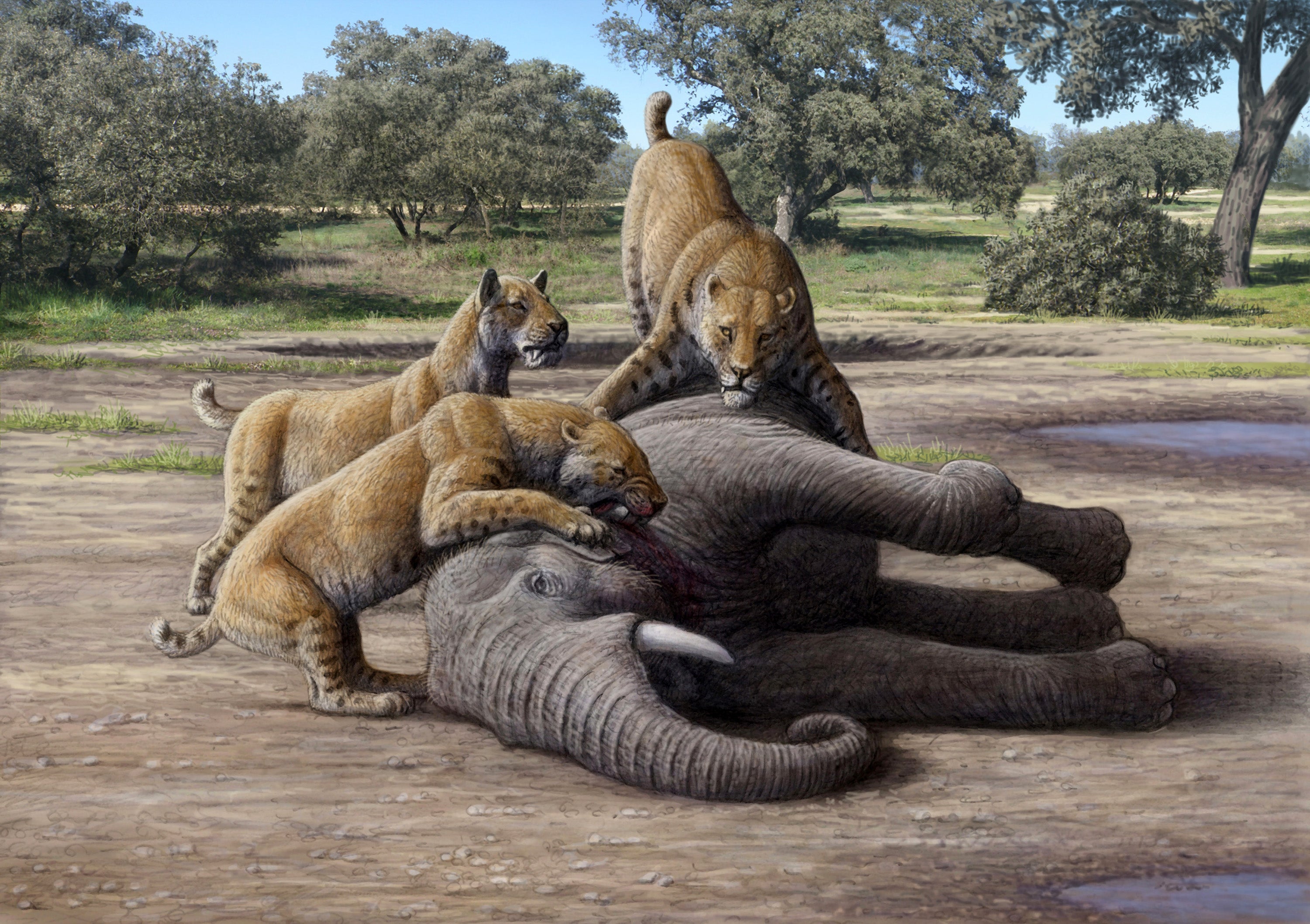
Baby mammoths were meals for these sabre-toothed cats
On a landscape that would one day become a suburb of San Antonio, mammoths were stalked by predatory cats with scimitar teeth. The cats would snatch a juvenile mammoth. Having eaten their fill, they would take the carcass back to their den. This was a meal that could be shared again later.
Researchers recently published a paper in the journal Current Biology providing evidence that supported this scenario. What it also shows is that the cats had a diet unlike any other large cat, either extinct or alive today.
When most people think of sabre-toothed cats, they think of North America’s Smilodon. But they prowled the same terrain as another ferocious but less well-known feline, Homotherium serum, also known as a scimitar cat. While the authors compare Homotherium to a cheetah in some respects, this cat appears to have been built more for long-distance running than sprinting. Its teeth were sharp and coarsely serrated, and its fangs were shorter than Smilodon’s iconic fangs. These shorter sabres may have been better at slashing as opposed to stabbing.
“Everything that we looked at basically told us that Smilodon and Homotherium are totally different cats,” says Larisa DeSantis, the paper’s lead author and a paleontologist at Vanderbilt University. She adds that although they were more closely related to each other than to any cat species living today, “They were able to coexist in these ecosystems likely due to having very different dietary niches.”
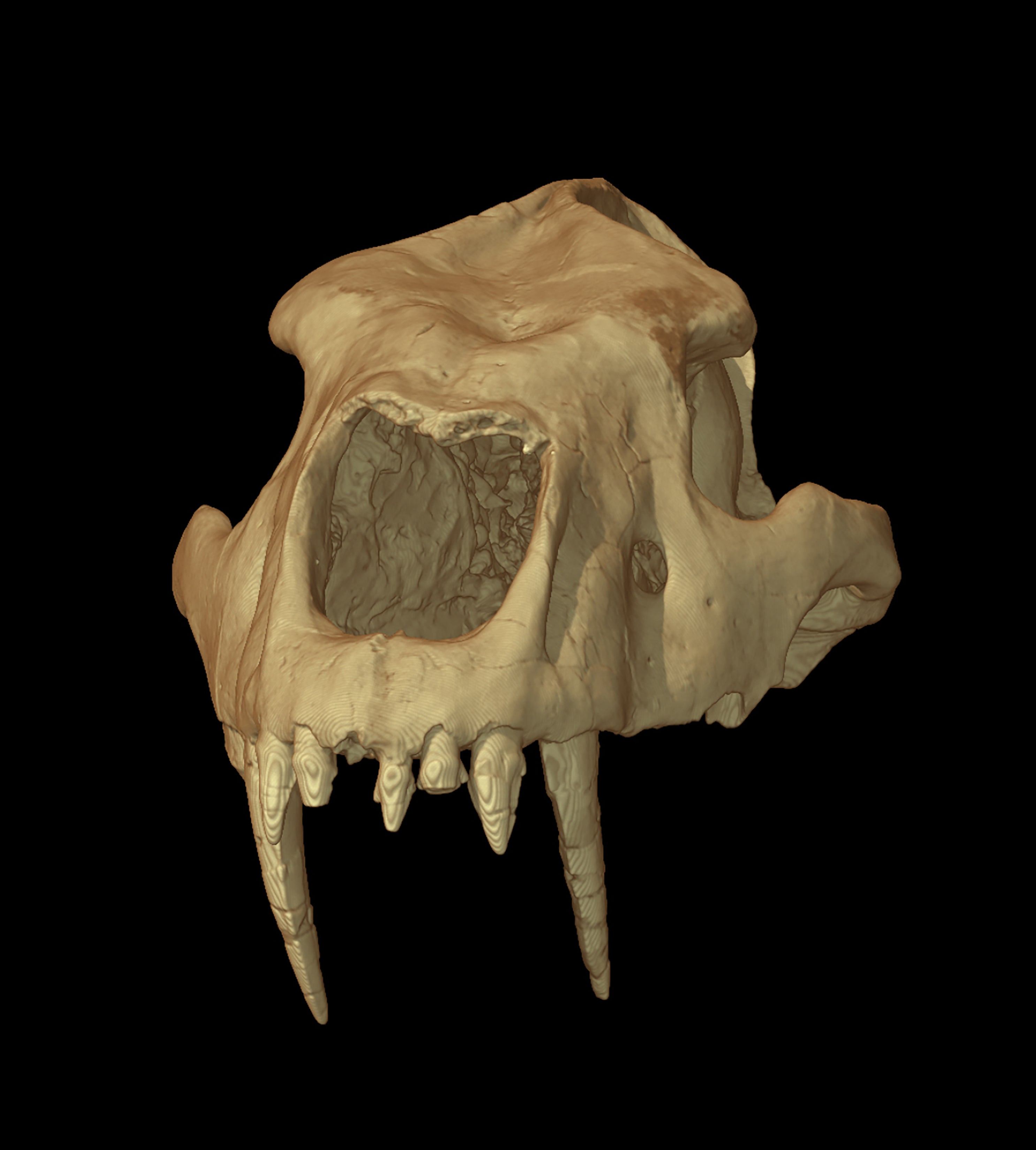
The Friesenhahn Cave outside San Antonio is a Pleistocene treasure trove, offering a diversity of fossil species, including a large number of juvenile mammoth bones. The abundance of Homotherium and mammoth suggests they may have been connected. But were they?
To answer this question, DeSantis and her colleagues had to establish the Homotherium diet.
They started with a three-dimensional analysis of the surface of Homotherium teeth, comparing them with those of similar predators during the Pleistocene era as well as those that hunt today. They found that Homotherium ate soft and tough food, but not bones. If they were eating mammoths, this meant they could eat the animals’ tough hides and soft flesh, but avoided crunching bone material.
The researchers also found chemical signatures that offered clear evidence that these cats were eating herbivores that grazed in open habitats.
This analysis, combined with the discovery of numerous detached mammoth-limb bones in a cave populated by Homotherium, led the researchers to conclude that mammoths were on the menu, and remains were dragged home after a successful hunt.
“I definitely think they would have hunted juvenile mammoths,” says Aaron Woodruff, a paleontologist at the Florida Museum of Natural History who was not involved in this research. “But I don’t think they would have done this often. Jeanne Timmons
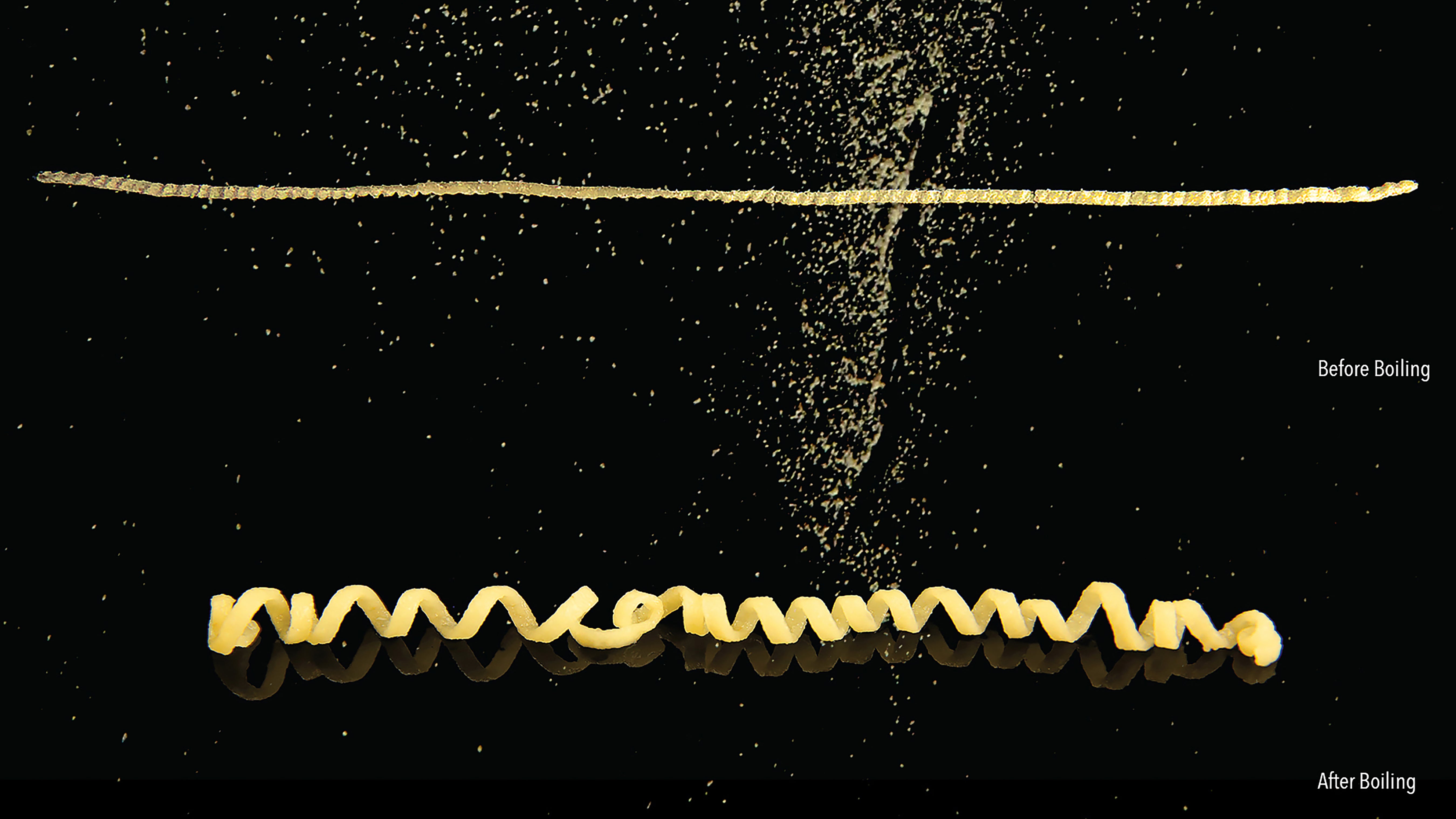
Flat pasta that turns into 3D shapes – just add boiling water
Don’t be fooled. This pasta may look like your average fettuccine. But cook it for seven minutes in boiling water and it will transform, coiling into a neat spiral.
The dynamic noodle is one of several designed and debuted recently by researchers at a Carnegie Mellon University lab.
Each new pasta design starts out flat and unassuming, but bounces and swells into three dimensions when boiled. In a paper published on 5 May in Science Advances, the researchers say the flat-to-plump pasta is not only fun to make, but uses less packaging, has a smaller carbon footprint, and cooks faster than traditional dried pasta.
“I think it’s really cool and elegant,” says Jennifer Lewis, a professor of biologically inspired engineering at Harvard University who was not involved in the study. “Anytime you can bring science to people through food, it’s a huge win.”
The research project didn’t begin as a culinary endeavour to remake one of the world’s most popular foods, says Lining Yao, a mechanical engineer at Carnegie Mellon and a co-author of the new study. Instead, in 2017, Yao and her colleagues set out to pattern and build two-dimensional structures that could transform themselves into three-dimensional shapes.
“We were thinking edible material could be very interesting,” Yao says. “We landed our eye on pasta.” It’s not only simple and ubiquitous, but has the added bonus of being “very rich in its shape design,” she says.
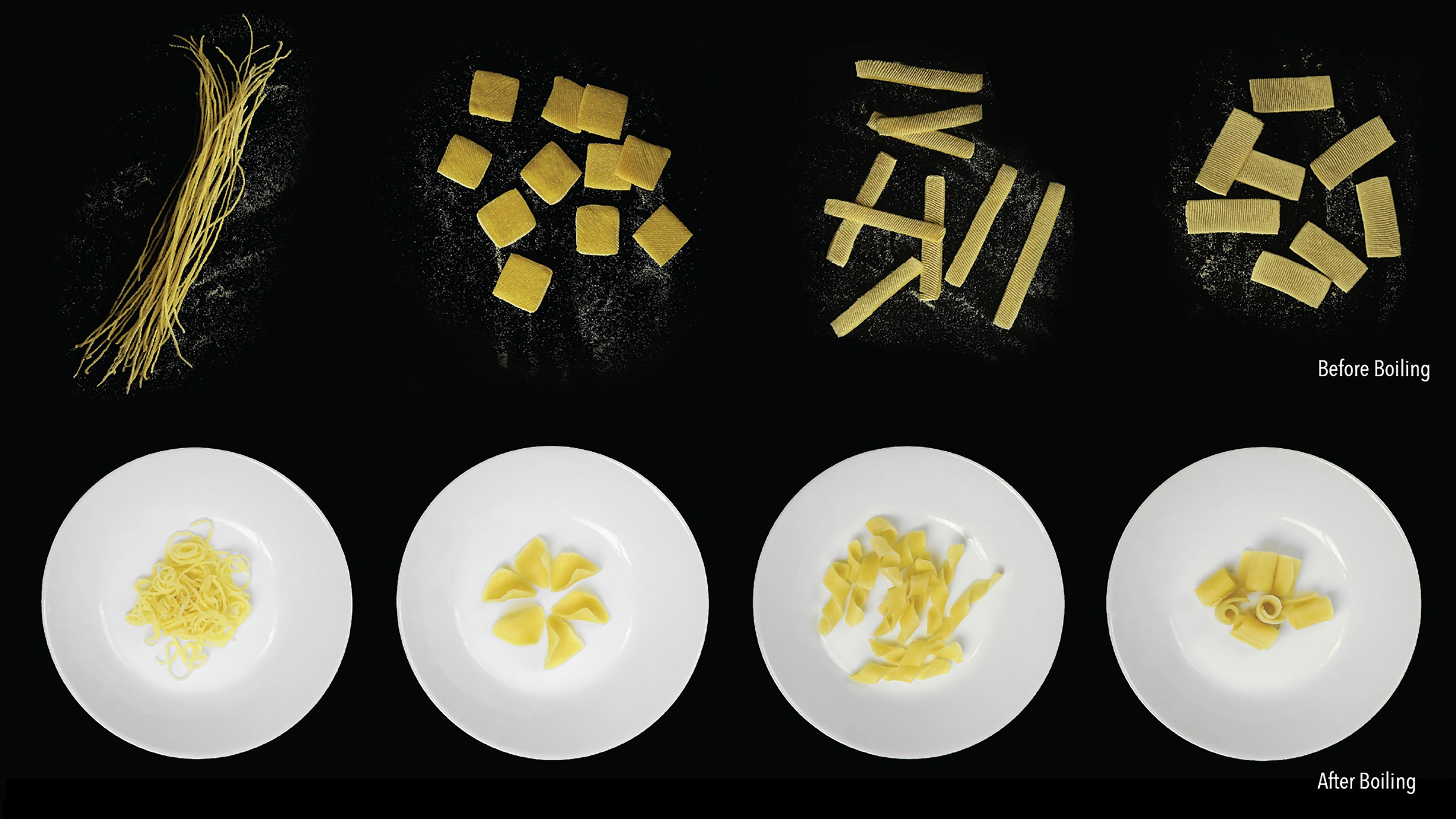
In the food industry, pasta is typically made by folding or by squeezing dough through a metal die and into the desired shape, be it an elbow, a twist or a tube.
For their new, shape-shifting pasta design, Yao’s team took a different tack. They began with a conventional recipe, mixing a simple combination of semolina flour and water, then using a classic roller to create sheets of dough.
Then, they strategically stamped the flattened dough to create tiny patterned grooves on its surface. During cooking, surfaces with grooves expand less than smooth ones, giving rise to shapes like boxes, saddles and waves.
“You can just make a modification to a pasta dough and get a very impressive shape-change,” says Teng Zhang, a mechanical and aerospace engineer at Syracuse University and a co-author of the study.
For the research, Zhang developed a computer model that predicted the final transformation of various designs based on factors including how heat and water would change the dough’s gluten and starch during the cooking process. “It’s more complex than just swelling,” he says.
The resulting models and designs could be useful for food delivery to disaster sites or for astronauts in space stations – two environments where it is useful if large amounts of food take up as little space as possible. Marion Renault
© The New York Times
Join our commenting forum
Join thought-provoking conversations, follow other Independent readers and see their replies
Comments